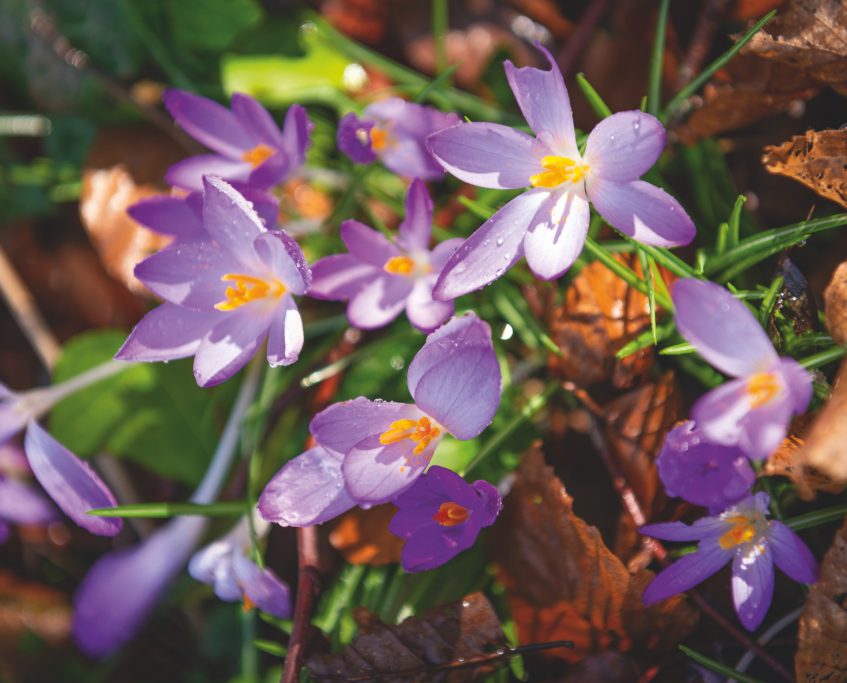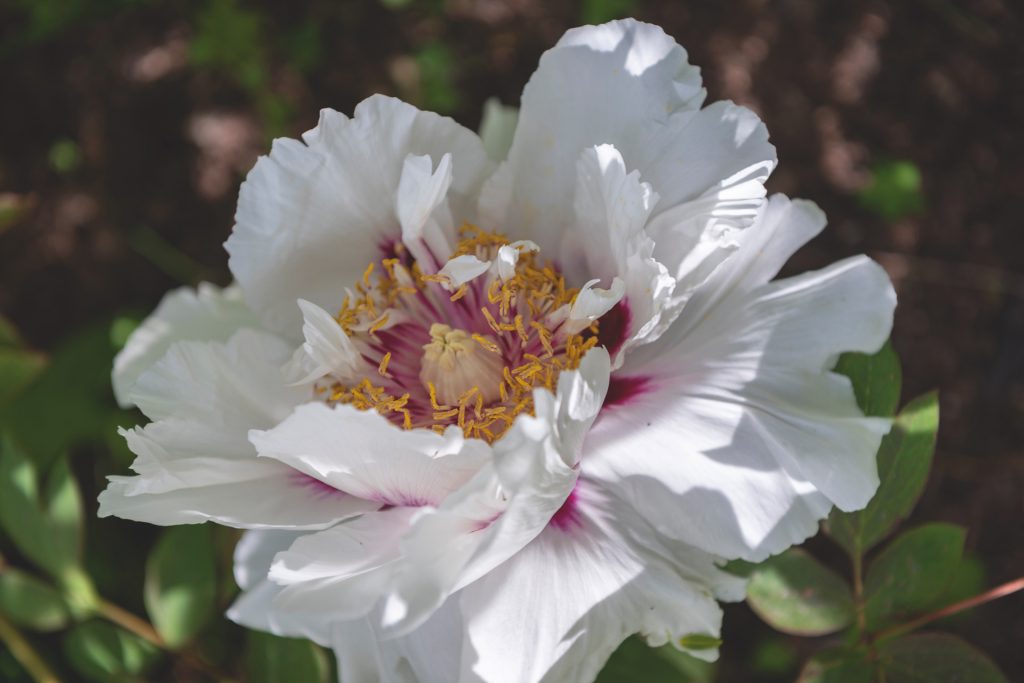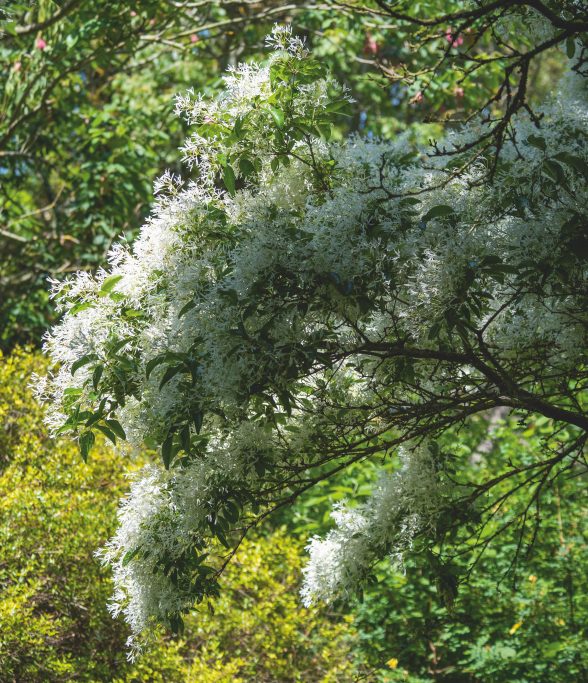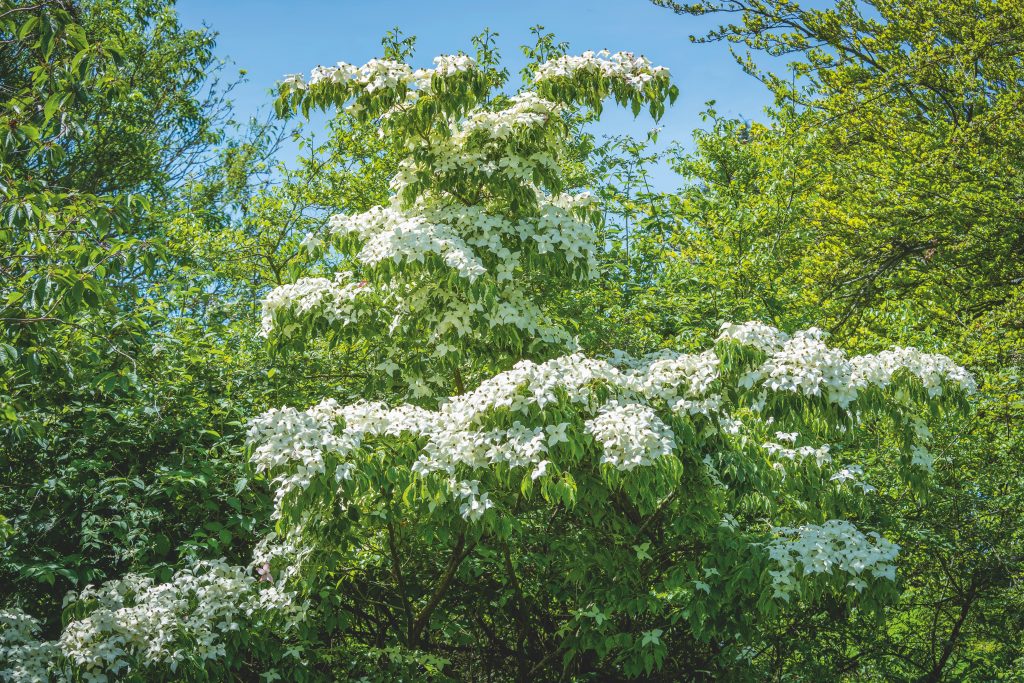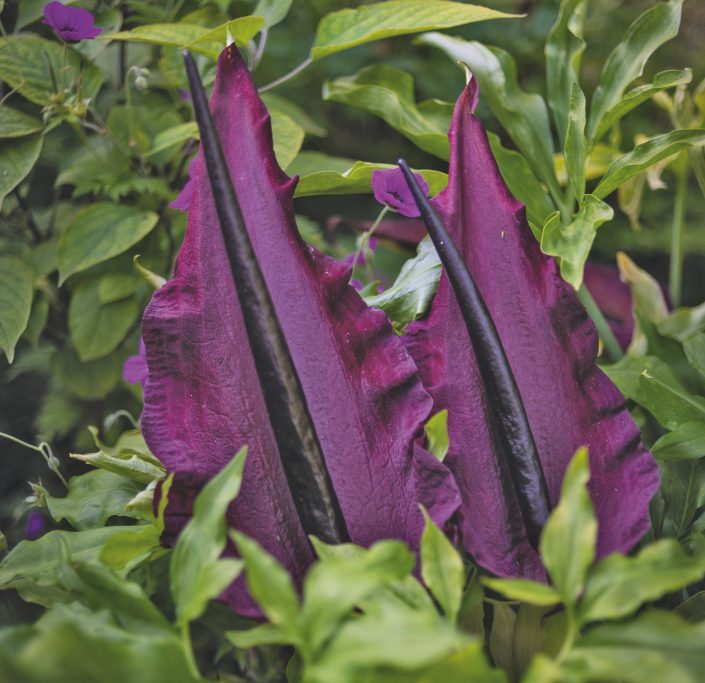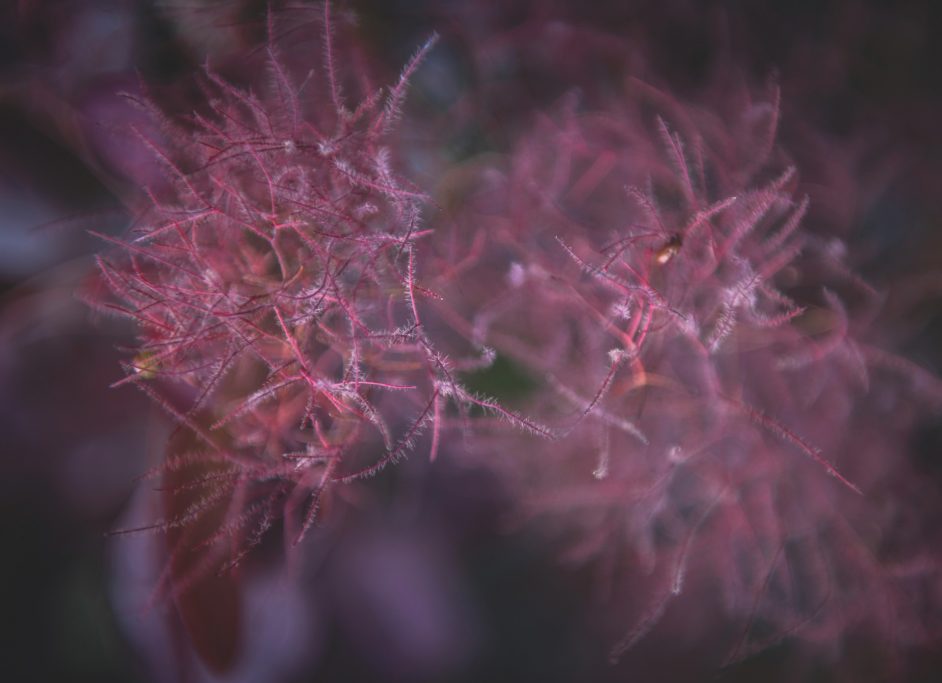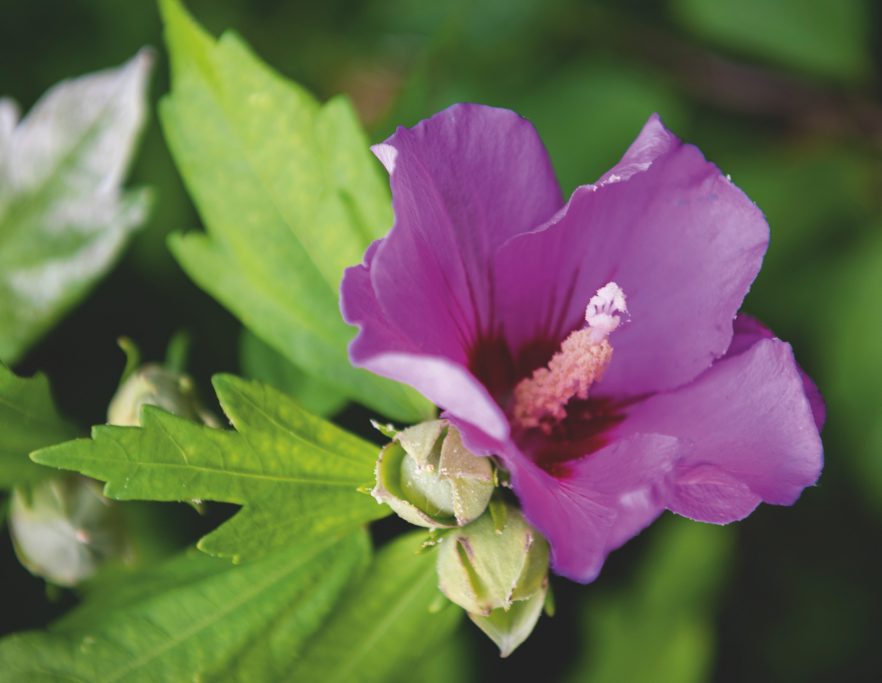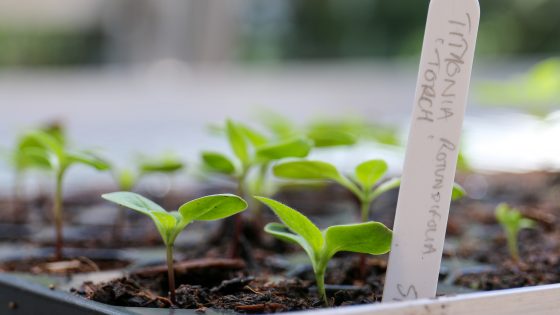
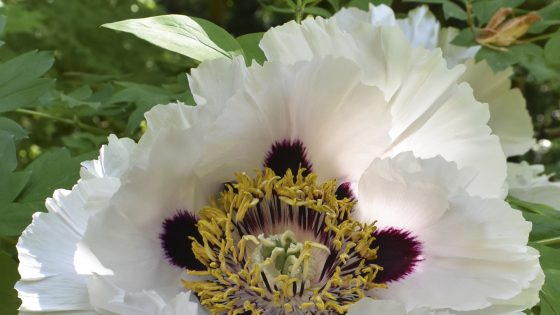

Plant timeline
January
Name: Eranthis hyemalis, Winter aconite
Natural habitat: Chalk woodlands of France, Italy and the Balkans
Description: E. hyemalis is a tuberous perennial that grows to 10cm in height. Has cup shaped bright yellow flowers 3cm across from late winter, surrounded by divided leafy bracts. Basal leaves are rich green, divided into several lobes.
Highdown location: Middle garden
Did you know?
Winter aconites are part of the buttercup family. Their life cycle exploits the deciduous woodland canopy, flowering at the time of maximum sunlight reaching the forest floor, then completely dying back after flowering. All parts of the plant are poisonous and the toxins are related to those found in toad venom.
February
Name: Galanthus nivalis, Snowdrop
Natural habitat: Europe
Description: G. nivalis is a perennial bulb growing to 15cm, with narrow greygreen leaves and solitary, nodding, fragrant white flowers 2.5cm in length, the inner segments marked with green at the tip.
Highdown location: Everywhere in the gardens
Did you know?
Even the common snowdrop has been given a threatened conservation status due to a damatic decrease in numbers. Snowdrops contain an active substance called galantamine which can be helpful in the treatment of alzheimer’s disease, though it is not a cure.
March
Name: Crocus tommasinianus, Woodland crocus
Natural habitat: Eastern Europe
Description: C.tommasinianus is a cormous perennial with a flower colour ranging from pale lilac to reddish purple, with the outer petals often overlaid with silver. It is one of the smaller cultivated crocus with a slender flower about 2–4cm long. It spreads readily and lends itself to large drifts.
Highdown location: Middle garden
Did you know?
They are often refered to as ‘tommies’ and were named after the botanist Muzio G Spirito de Tommasini (1794–1879). Crocus bulbs remaining in the ground will always bloom a little bit earlier than the ones planted the previous year.
April
Name: Euphorbia characias subsp. Wulfenii, Mediterranean spurge
Natural habitat: Rocky slopes & scrublands of Mediterranean
Description: An erect medium sized sub shrub with whorls of narrow grey green leaves and large rounded heads of numerous greenish yellow flowers with bronze ‘eyes’ from March – May.
Highdown location: Chalk pit and middle garden
Did you know?
The famous garden designer Gertrude Jekyll described this sun loving, evergreen shrub as ‘one of the grandest of plants’. Each stem is biennial, so will produce leaves in its first year and flowers in its second.
May
Name: Paeonia suffruticosa, Moutan peony
Natural habitat: Eastern Asia
Description: A deciduous shrub growing to 2m by 3m but at a slow rate. Dark green leaves which are blue green underneath with large silken blooms 15–30cm across in late spring and early summer. Flowers come in a multitude of shapes, colours and fragrances.
Highdown location: Everywhere in gardens
Did you know?
Cultivated in China for a thousand years as traditional medicine. The skin of the roots is used to treat blood disorders and improve liver function. The wild plant is threatened with extinction due to over harvesting.
June
Name: Chionanthus retusa, Chinese fringe tree
Natural habitat: Eastern Asia
Description: Lovely upright deciduous tree grows to 20m with dark brown, grey tinged bark which is deeply fissured and oval mid green leaves which have a bright white underside. Striking because of the clusters of small, pure white flowers, with fringe like petals and beautiful fragrance, which cover the tree in late spring and early summer.
Highdown location: Middle garden
Did you know?
The root was used, as medicine, for fever relief and more recently for treating jaundice. The genus name Chionanthus comes from the greek words chion meaning snow and anthos meaning flower.
July
Name: Cornus kousa var.chinensis, Chinese dogwood
Natural habitat: Eastern Asia
Description: Small bushy tree which produces a profusion of large white flower bracts that slowly develop pinkish hues as they mature. Followed by large strawberry like pink fruits. The leaves are green and rounded, changing to reds and purples in autumn.
Highdown location: Lower garden
Did you know?
Introduced into the UK by plant hunter Ernest H Wilson in 1907 from the Hupei province of China.
August
Name: Dracunculus vulgaris, Voodoo lily
Natural habitat: Balkans and Eastern Mediterranean
Description: The plant is characterised by a large purple spathe and spadix, which has a very unpleasant smell, reminiscent of rotting meat, to attract flies as pollinators. Large palmate leaves have occasional cream flecks along the veins.
Highdown location: Lower garden
Did you know?
The genus name Dracunculus is Latin for small dragon, as the spadix and spathe appear to be the tongue of a dragon breathing fire! It is believed that carrying the roots or leaves protects against serpents.
September
Name: Cotinus coggygria, ‘Royal Purple’ smoke bush
Natural habitat: Southern Europe to Northern China
Description: Large bushy deciduous shrub, growing to 5m, with rounded deep purple leaves becoming gloriously red in autumn. Large, feathery, pink inflorescences in summer giving the appearance of ‘smoke’ from a distance, hence the common name.
Highdown location: Middle and lower gardens
Did you know?
Large fossils of C. coggygria have been found in Western Georgia, near the Black Sea and Turkey. These plant fossils are at least 2.5 million years old!
October
Name: Hibiscus syriacus, Rose of Sharon
Natural habitat: South China and Korea
Description: Hardy deciduous shrub, upright and vase shaped, 2–4m in height, bearing large trumpet shaped flowers with prominent stamen. Flowers are often pink but can range from dark pinky purple to white. Individual flowers last only a day, however numerous buds provide prolific flowering over a long period.
Highdown location: Middle garden
Did you know?
In Korea H. syriacus leaves are brewed into a tea and the flowers can be eaten. It is the national flower of South Korea. It appears on bank notes and the seal of the President of South Korea.
November
Name: Clerodendrum trichotomum var. fargesii, Harlequin glorybower
Natural habitat: Central and Eastern Asia
Description: A vigorous deciduous shrub growing to 6m with large ovate leaves. Beautifully scented white flowers, borne in green star shaped calyces appear in late summer. The calyces later turn crimson as the turquoise berries mature, providing wonderful autumn interest.
Highdown location: Lower garden
Did you know?
The leaves produce a peanut butter like odour when crushed, hence another common name – peanut butter tree! It is known for attracting bees as it has nectar rich flowers.
December
Name: Berberis jamesiana, James barberry
Natural habitat: Tibet and China
Description: A large, deciduous, arching shrub with curtains of sunny yellow flowers in spring, which develop into wonderful drapes of salmon coloured berries in late summer, turning deep red in late autumn. The attractiveness of the berries is enhanced by their transparency. Beware it has vicious spines.
Highdown location: Middle garden
Did you know?
Discovered and introduced to the UK by George Forrest the Scottish botanist and plant hunter in 1913.


